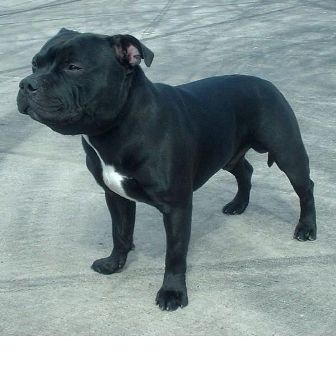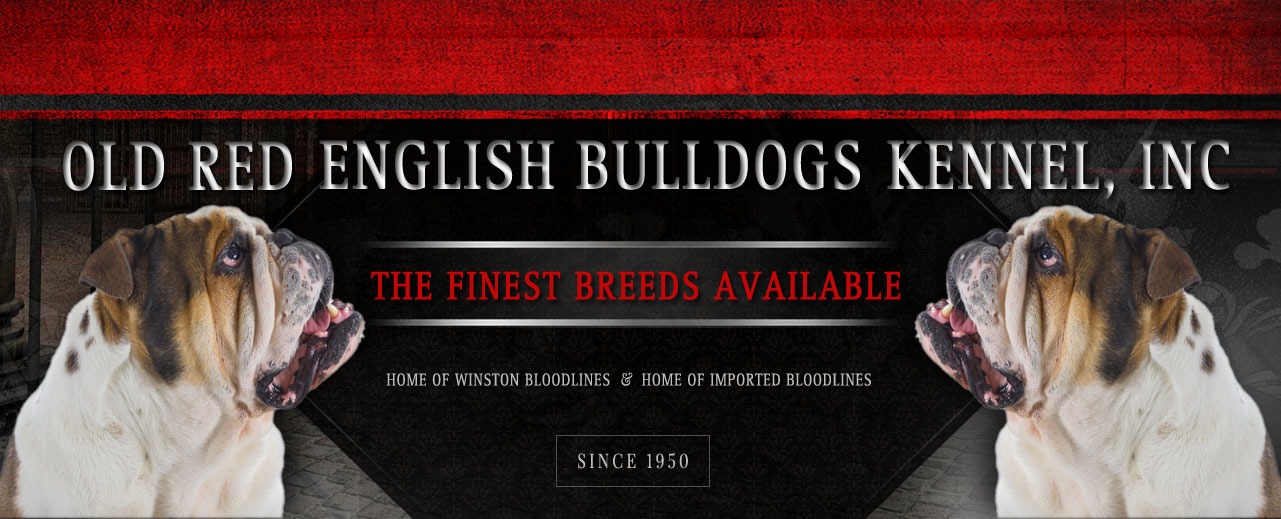
The Staffordshire Bull Terrier, along with the American Pit Bull Terrier and the American Staffordshire Terrier, comprises a group of dogs often referred to as Bully breeds, collectively and generically known as Pit Bulls. Although most Staffordshire Bull Terrier and American Staffordshire Terrier breeders disfavor the term, it stems from ongoing debate about the relationship between the three breeds, with some considering them entirely separate and others viewing them as mere variations of the same breed, similar to Longhaired vs. Shorthaired Chihuahuas. The Staffordshire Bull Terrier is a direct descendant of 19th-century English fighting dogs. While its origins in dog fighting might suggest aggression, the modern breed is well known for its stability and strong affinity for people. However, the breed remains subject to breed-specific legislation in some jurisdictions, which either restricts ownership or bans possession outright. The Staffordshire Bull Terrier is also known by various names, including Staffordshire Terrier, English Staffordshire Terrier, English Pit Bull Terrier, Staffy Bull, and Staffy.
BREED BASICS
Country of Origin:
England
Size:
Medium 15-35 lb
Large 35-55 lb
LifeSpan:
12 to 15 Years
Trainability:
Very Easy To Train
Energy Level:
High Energy
Grooming:
Brushing Once a Week or Less
Protective Ability:
Good Watchdog
Hypoallergenic Breed:
No
Space Requirements:
House with Yard
Compatibility With Other Pets:
May Be Okay With Other Pets If Raised Together
Not Recommended For Homes With Existing Dogs
Not Recommended For Homes With Small Animals
Litter Size:
5-10 puppies
Names:
Staffordshire Terriers, English Staffordshire Terriers, English Pit Bull Terriers, Staffy, Bulls, Staffies Stafford, Staffy, Staff Bull
HEIGHT/WEIGHT
Males:
28-38 lbs, 14-16 inches
Females:
24-34lbs, 14-16 inches
KENNEL CLUBS AND RECOGNITION
American Kennel Club:
Terrier Group
ANKC (Australian National Kennel Council):
Group 2 (Terriers)
CKC(Canadian Kennel Club):
Group 4 (Terriers)
FCI (Federation Cynologique Internationale):
Section 3 : Bull type Terriers
KC (The Kennel Club):
Terrier
NZKC (New Zealand Kennel Club):
Group 2 – Terrier
UKC (United Kennel Club):
Terrier-UKC
HISTORY:
This breed is so closely related to the other types that comprise the Bully breed group, please see the history section of the article about Bully breeds for more information about the creation Staffordshire Bull Terrier and its relationship to the other members of the group.
APPEARANCE:
The Staffordshire Bull Terrier is the oldest of the three Bully breeds and is also the smallest and most Terrier-like. Most stand between 14 and 16 inches tall at the shoulder, with males typically weighing between 28 to 38 pounds and females between 24 to 34 pounds. In recent years, some American breeders have been producing larger Staffordshire Bull Terriers, but such dogs are ineligible for the show ring. Ideally, the breed should be squarely proportioned, meaning it should be as long as it is tall, though some individuals may be noticeably longer. Staffordshire Bull Terriers are very muscular but less stocky than the other Bully breeds and would never be considered lean. The breed’s tail is of medium length, low-set, and tapers to a point, and it is very rarely docked, a procedure that is actually illegal in many countries.
The head and face of the Staffordshire Bull Terrier resemble a cross between a Bulldog and a Terrier, featuring a large, relatively square-shaped head for its size. Among the three Bully breeds, it has the smallest head and the shortest muzzle, which, while short, is not as extreme as that of an English Bulldog. The muzzle is also wide and powerful. The breed has relatively small eyes, with their color determined by coat color, and a nose that should always be black. Its small, rose-shaped ears are tightly folded and often held backward. While some Staffordshire Bull Terriers have slightly wrinkly faces, this is not as pronounced as in other Bully breeds and is not especially preferred in the show ring. The breed’s overall expression varies greatly, with some appearing happy-go-lucky and friendly, while others have a more serious and intimidating look.
The coat of the Staffordshire Bull Terrier is short, smooth, and held close to the skin. Bred primarily as a working dog, color was of little importance to its breeders, resulting in a variety of coat colors, including red, fawn, white, black, blue, and brindle. White markings may appear on any of these colors in any pattern or proportion.
GROOMING REQUIREMENTS:
All three of these dogs are among the easiest to groom, requiring only occasional brushing and never professional grooming. While they do shed, the amount varies from dog to dog; some are average shedders that leave some hair but not excessively, while others, particularly some American Pit Bull Terriers, shed almost constantly.
HEALTH ISSUES:
The Staffordshire Bull Terrier is considered a very healthy breed, having been bred primarily for working ability until the 1930s, a trait breeders continue to preserve. The breed also benefits from a comparatively large genetic pool, which helps reduce the prevalence of inherited health issues. However, this does not mean the breed is immune to genetic conditions; rather, it tends to suffer from fewer problems and at a lower rate than other breeds. One significant concern is the breed’s high pain tolerance, which can prevent owners from noticing illnesses or injuries until they are quite advanced. The average life expectancy of a Staffordshire Bull Terrier is between 10 and 16 years. One of the most common health issues is cataracts, which, similar to those in humans, can cause decreased vision or even blindness. While treatments are available, many require expensive surgery.
Because skeletal and visual problems, such as hip dysplasia, are commonly seen in this breed, it is highly advisable for owners to have their pets tested by both the Orthopedic Foundation for Animals (OFA) and the Canine Eye Registration Foundation (CERF). These organizations conduct genetic and other tests to identify potential health defects before symptoms appear, which is particularly valuable for detecting conditions that may not manifest until the dog reaches an advanced age. This makes testing especially important for anyone considering breeding their dog, as it helps prevent the spread of potential genetic conditions to offspring.
A full list of health problems which are known to affect the Staffordshire Bull Terrier would have to include:
- Injury Prone
- Cataracts
- Hip Dysplasia
- Elbow Dysplasia
- Demodicosis/Demodectic Mange
- Brachycephalic Syndrome
- Gassiness
- Heat Intolerance
- Atopic Dermatitis/Skin Allergies
- L – 2 Hydroxyglutaric Aciduria
- Luxating Patella
These are the Bulldogs and Mastiffs we breed and sell.
The pictures on each page are for identification purposes and OldBulldogs.com does not own every animal pictured. These pages are informational and intended to describe the standards of each breed.
- Alano Español
- Alapaha Blue Blood Bulldogs
- American Bandogge Mastiffs
- American Bully-Bullies
- American Pit Bull Terriers
- American Staffordshire Bullies
- American Staffordshire Terriers
- Arkansas Giant Bulldogs
- Australian Bandogge Mastiffs
- Australian Bulldogs
- American Bulldogs-Old Time Southern Bulldogs-Old Southern Whites
- Banter Bulldogs
- Boxer Bulldogs
- Bull Terriers
- Bull Mastiffs
- Miniature Bull Terriers
- Mexican Bulldogs
- Miniature English Bulldogs
- Neapolitan Mastiffs
- Old Boston Bulldogs
- Olde English Bulldogges
- Old Victorian Bulldogs
- Patterdale Terrier
- Perro de Presa Canario
- Performance-Standard Type American Bulldogs
- Perro de Presa Mallorquin
- Panja Mastiffs
- Renascence Bulldogs
- South African Boerboel
- Staffordshire Bull Terriers
- Saint Bernard
- Valley Bulldogs
- Winston Working Bulldogs
- Winston’s Working Mastiffs
- Winston’s Working Terriers
- Winston’s Working Hounds
- Winston’s Working Shepherds
